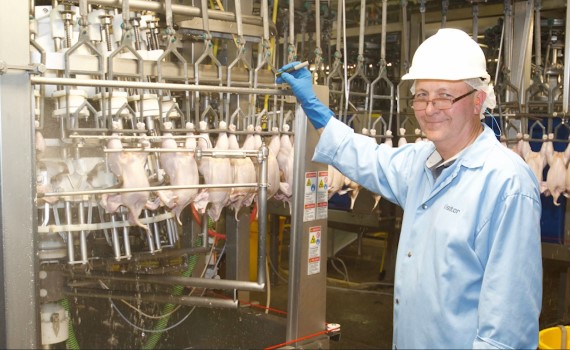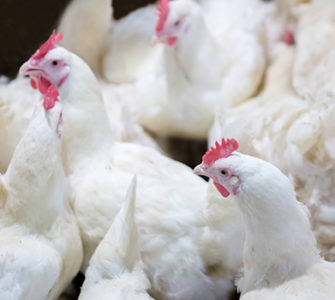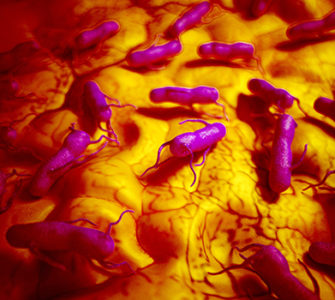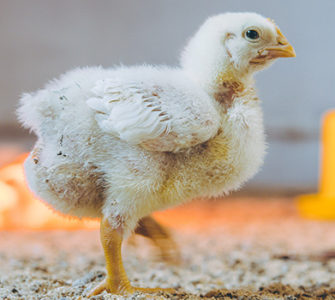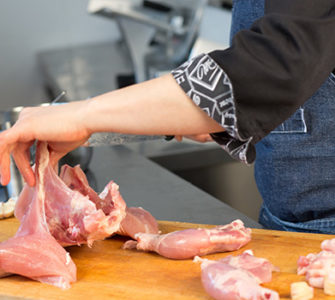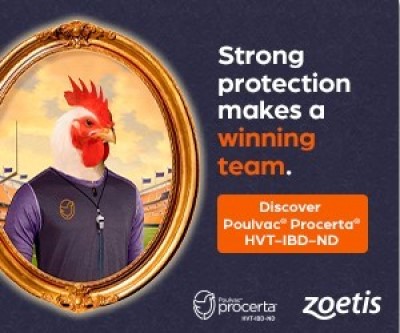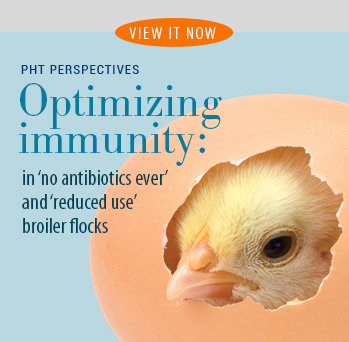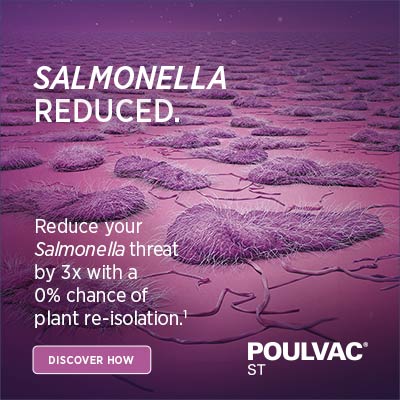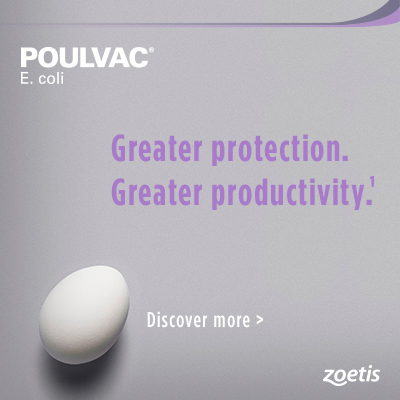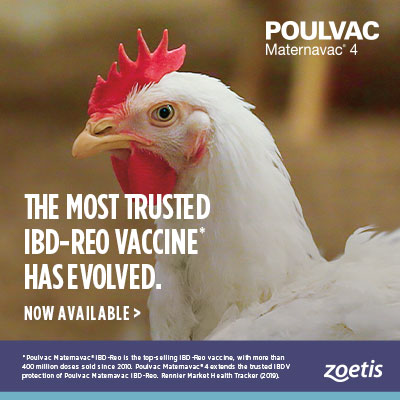Too few aware of FSIS guidelines about live Salmonella vaccines
By Douglas L. Fulnechek, DVM
Senior Public Health Veterinarian
Zoetis
When it comes to the risk of Salmonella in the poultry industry, it should first and foremost be noted that Salmonella does not originate at the processing plant, so the aim is to prevent broiler chicks or turkey poults from becoming colonized — a big challenge.
However, the processing plant is where the USDA does its testing. In the industry, we’re all familiar with regulators’ three-tiered system based on the prevalence of Salmonella found at processing. Category 1 is the best place to be, and Category 2 means the processing plant has met the performance standard.
Category 3 is where no one wants to be; it means the prevalence of Salmonella is too high, and the consequences can be dire, especially if remedial action isn’t taken.
The industry is less familiar, however, with updated guidelines from USDA’s Food Safety and Inspection Service (FSIS)1 regarding the use of live Salmonella vaccines. In fact, although the guidelines were issued in June 2021, about nine in 10 people who should know about them don’t. That’s based on conversations that I and colleagues have had with quite a few HACCP (hazard analysis and critical control points) coordinators or quality-assurance people.
Vaccine conundrum
The FSIS guidelines say that live Salmonella vaccines used during live production could introduce a hazard at processing. If producers are using a live Salmonella vaccine, they are advised to show how its use does not affect the safety of poultry products and that it does not interfere with FSIS inspection procedures. This is an important change and one that I have been keen to underline.
The reason for FSIS’s recent regulatory update is due to its concern that some live Salmonella vaccines can persist in the bird and can be recovered at the processing plant.
It’s a conundrum because vaccination against Salmonella is key to controlling the pathogen. In addition, not all Salmonella vaccines are the same.
Never recovered
We know for certain that Poulvac® ST has never been recovered by FSIS at processing.
The reason? A gene has been deleted from the strain of S. Typhimurium in Poulvac ST, and without that gene, the vaccine bacteria cannot replicate indefinitely in the bird. In other words, the vaccine helps initiate immunity against Salmonella, but it’s a self-limiting, nonpersistent infection. In studies, the vaccine was recovered for up to 2 weeks after vaccination,2,3 but then ceased to persist in the bird, on the bird or in the environment.
When Zoetis scientists conducted an intensive analysis of the whole-genome sequences of Salmonella isolates submitted by FSIS to the National Center for Biotechnology Information database, they could find none that were genetically similar to Poulvac ST.
Serious consequences
The updated guideline from FSIS is potentially significant for producers because the recovery of any Salmonella counts against the number of positives a plant can have during the sampling period. If they use a live Salmonella vaccine that can be recovered at processing, it could increase the possibility of their plant ending up in Category 3, especially if they’re having a problem with Salmonella anyway.
Well-considered vaccine choices are always important in managing infectious diseases in live-animal production — but in this case, it seems to be even more pertinent.
Focus on live production
To minimize the prevalence of Salmonella at processing, the main emphasis should always be on live operations. Proper vaccination of pullets is one of the first measures that needs to be undertaken. Three vaccinations are a minimum, but five is better for ensuring passive-immunity transfer and less risk of shedding Salmonella to progeny. I recommend pullets get two Poulvac ST vaccines early — preferably on day of hatch and then a field booster — followed by Poulvac® SE-ND-IB at 12 weeks, and then at least one multivalent Salmonella vaccine at about 20 weeks.
For the serotypes that aren’t available in commercial vaccines, an autogenous vaccine should be added to the protocol. Including serotypes from Groups B, C and D should help cover most poultry serotypes of concern.
The load of Salmonella going into the processing plant can also be minimized by using a live attenuated vaccine like Poulvac ST in newly hatched broiler chicks or poults before they’re exposed to the house environment.
Vaccines can’t do it alone
Vaccination alone, of course, cannot control Salmonella. Eggs from the breeder farm need to be clean. The hatchery must employ good sanitation practices. Throughout production, there must be effective rodent control. Birds with good intestinal health are more likely to have a lower load of Salmonella. There needs to be proper feed withdrawal before processing and correct functioning of evisceration equipment within the processing plant.
This type of careful management coupled with a well-planned vaccination protocol can minimize the load of Salmonella that makes it into processing plants and help keep processing plants out of Category 3.
1 FSIS Guideline for Controlling Salmonella in Raw Poultry. United States Department of Agriculture. June 2021. Retrieved January 6 2022 from: https://www.fsis.usda.gov/sites/default/files/media_file/2021-07/FSIS-GD-2021-0005.pdf
2 Data on file, Study Report No. TIA 22492, Zoetis LLC.
3 Data on file, Study Report No. TIA 22485, Zoetis LLC.
Editor’s note: The opinions and advice presented in this article belong to the author and, as such, are presented here as points of view, not specific recommendations by Poultry Health Today.
All trademarks are the property of Zoetis Services LLC or a related company or a licensor unless otherwise noted.
©2022 Zoetis Services LLC. All rights reserved. BIO-00361
Posted on November 22, 2022



